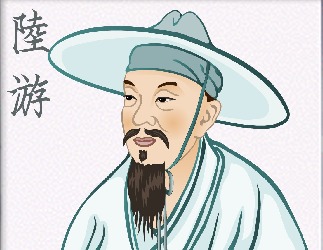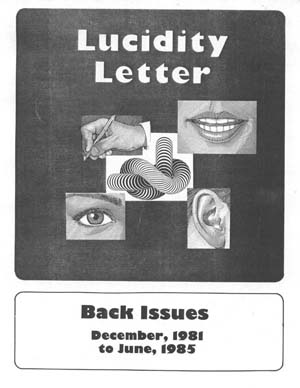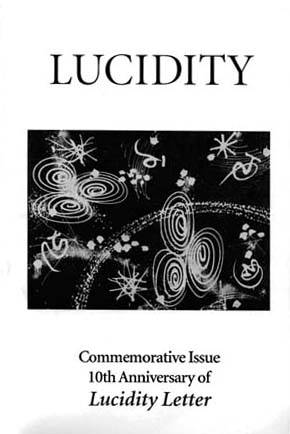
All the information below is from the website:
http://timeline.thefullwiki.org/Lucid_dream
Please visit their site for the orignal information
410s
415: A letter written by St. Augustine of Hippo in 415 AD refers to lucid dreaming. – Lucid dream, Wikipedia.
1600s
1605: An early recorded lucid dreamer was the philosopher and physician Sir Thomas Browne (1605–1682). – Lucid dream, Wikipedia.
1660s
August 15, 1665: Similarly, Samuel Pepys in his diary entry for 15 August 1665 records a dream “that I had my Lady Castlemayne in my arms and was admitted to use all the dalliance I desired with her, and then dreamt that this could not be awake, but that it was only a dream”. – Lucid dream, Wikipedia.
1860s
1860: The term was coined by the Dutch Psychiatrist and writer Frederik van Eeden (1860–1932). – Lucid dream, Wikipedia.
1867: He published his book Les Reves et les moyens de les diriger; observations pratiques (Dreams and How to Guide them; Practical Observations), in which he documented more than twenty years of his own research into dreams. – Lucid dream, Wikipedia.
1910s
1913: The term lucid dreaming was coined by Dutch author and psychiatrist Frederik van Eeden in his 1913 article “A Study of Dreams”. – Lucid dream, Wikipedia.
1930s
1939: Oliver Fox was the pseudonym of Hugh George Callaway (30 November 1885–28 April 1949), an English short story writer, poet and occultist, chiefly remembered for his Astral Projection: A Record of Research[1] (1939), an account of his lucid dreams and out-of-the-body experiences. – Oliver Fox, Wikipedia.
1950s
1950s: In the 1950s, the Senoi hunter-gatherers of Malaysia were reported to make extensive use of lucid dreaming to ensure mental health, although later studies refuted these claims. – Lucid dream, Wikipedia.
1959: Philosopher Norman Malcolm’s 1959 text Dreaming[7] had argued against the possibility of checking the accuracy of dream reports. – Lucid dream, Wikipedia.
1960s
1968: The first book to recognize the scientific potential of lucid dreams was Celia Green’s 1968 study Lucid Dreams. – Lucid dream, Wikipedia.
1970s
1970s: The first evidence of this type was produced in the late 1970s by British parapsychologist Keith Hearne. – Lucid dream, Wikipedia.
1970s: In the early 1970s, Daniel Oldis of the University of South Dakota leveraged the scientific principle of external sensory incorporation in an attempt to influence dream content and evoke lucidity. – Lucid dream, Wikipedia.
1980s
1980s: During the 1980s, further scientific evidence to confirm the existence of lucid dreaming was produced as lucid dreamers were able to demonstrate to researchers that they were consciously aware of being in a dream state (again, primarily using eye movement signals). – Lucid dream, Wikipedia.
1985: LaBerge performed a pilot study where lucid dreamers counted out ten seconds while dreaming, signaling the end of counting with a pre-arranged eye signal measured with electrooculogram recording. – Lucid dream, Wikipedia.
1985: G. William Domhoff argued in The Mystique of Dreams that the anthropologists who have worked with the Temiar/Senoi people report that they are familiar with the concept of lucid dreaming and that it is not of great importance to them. – Senoi, Wikipedia.
1985: G. William Domhoff argued in The Mystique of Dreams that the anthropologists who have worked with the Temiar/Senoi people report that they are familiar with the concept of lucid dreaming and that it is not of great importance to them. – Senoi, Wikipedia.
1987: The Lucidity Institute is an incorporated research institute founded in 1987 by Stephen LaBerge that supports lucid dreaming research and development of techniques that help people achieve lucid dreams. – The Lucidity Institute, Wikipedia.
1990s
1991: In a study of fourteen lucid dreamers performed in 1991, people who perform wake-initiated lucid dreams operation (WILD) reported experiences consistent with aspects of out-of-body experiences such as floating above their beds and the feeling of leaving their bodies. – Lucid dream, Wikipedia.
1992: A 1992 study examining four forms of lucidity (knowing that dreamt people are indeed dreamt, that objects won’t persist beyond waking, that physical laws need not apply, and having clear memory of the waking world) found less than a quarter of lucidity accounts exhibited all four, with scores increasing with experience. – Lucid dream, Wikipedia.
1993: The first widely distributed dream-induction device is the NovaDreamer, designed in 1993 by Craig Webb. – Lucid dream, Wikipedia.
1994: Katz was featured in the Discovery channel video series “The Power of Dreams” (1994) along with other lucid dream trainers including Stephen LaBerge and Tenzin Wangyal. – Michael Katz, Wikipedia.
1995: However, a 1995 study in Germany indicated that lucid dreaming can also have varied time spans, in which the dreamer can control the length. – Lucid dream, Wikipedia.
2000s
2003: The NovaDreamer was discontinued in 2003 but the NovaDreamer 2 should have been available late 2009. – Lucid dream, Wikipedia.
2004: LaBerge’s results were confirmed by German researchers in 2004. – Lucid dream, Wikipedia.
2004: A similar device called the NovaDreamer II has been “coming soon” since at least 2004. – Lucid dream, Wikipedia.
December, 2004: LaBerge filed for a patent application in December 2004 [33] that outlined the basic technique of boosting Acetylcholine levels to promote lucid dreaming. – Lucid dream, Wikipedia.
February, 2005: Voted in January, 2005: February 2005 (Lucid Dreaming — 12) – Wikibooks:Book of the month, Wikibooks.
2006: A pilot study was performed in 2006 that showed that lucid dreaming treatment was successful in reducing nightmare frequency. – Lucid dream, Wikipedia.



